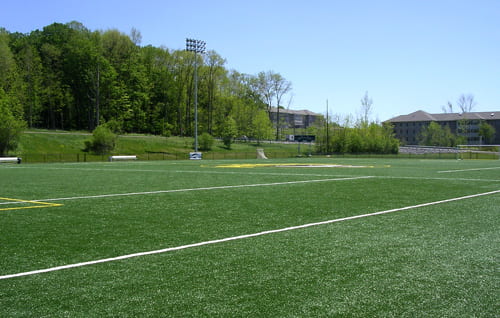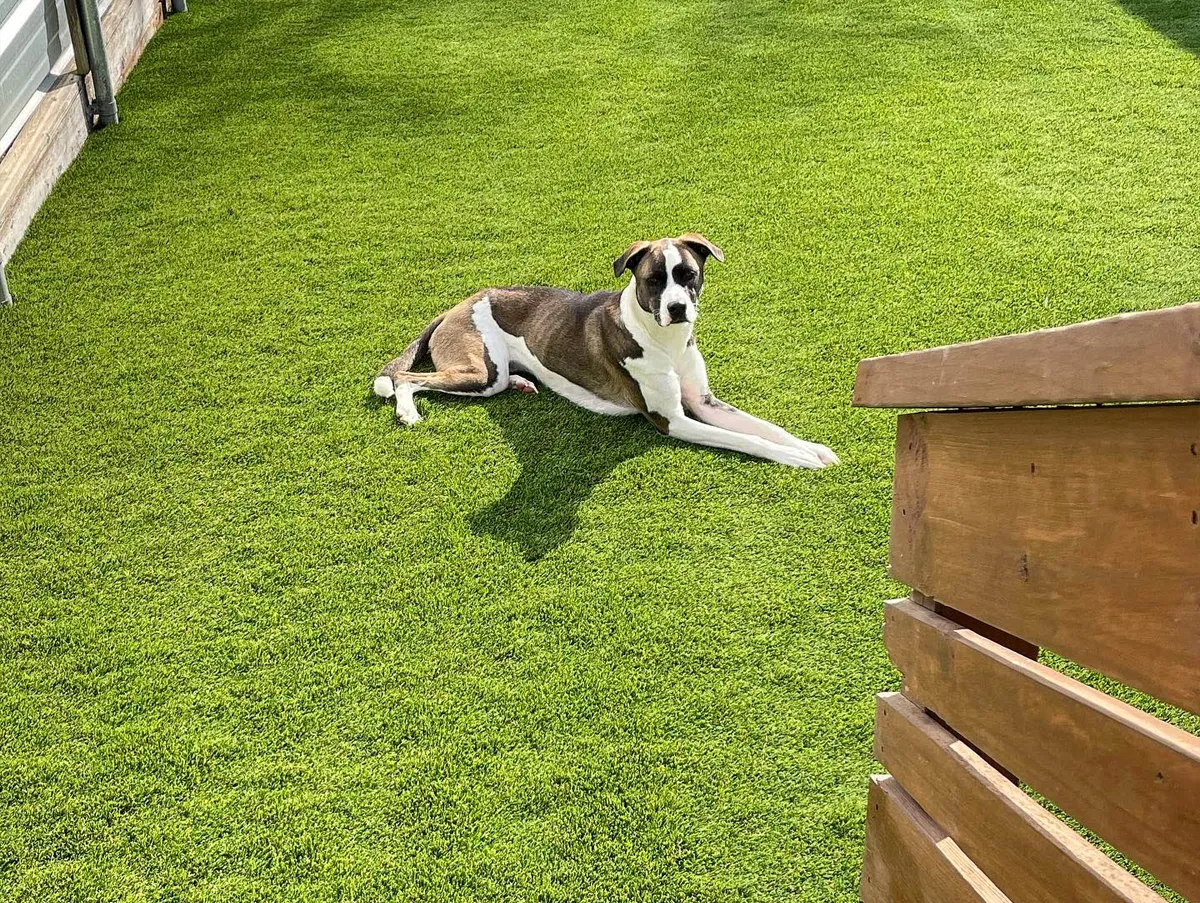See Why Homeowners Prefer Artificial Grass for Lasting Landscape Design Practices
As house owners increasingly focus on sustainability in landscaping, man-made lawn has emerged as a compelling alternative to typical turf. What continues to be to be explored is the full extent of advantages that man-made turf can use to homeowners and the atmosphere alike.
Water Preservation Benefits
One of one of the most substantial benefits of synthetic grass is its duty in water preservation. Conventional lawn yards call for substantial amounts of water to preserve their rich look, typically bring about overuse of neighborhood water resources, particularly in arid areas. In contrast, synthetic grass removes this need totally, as it does not call for irrigation. This not only saves water yet additionally reduces the strain on municipal water systems, especially during drought problems.
Moreover, the installation of artificial turf can contribute to a much more lasting landscape. House owners can substantially reduce their water expenses, allowing for reallocation of resources to various other environmental initiatives or household uses. In addition, synthetic grass is created to stand up to numerous weather conditions without the need for supplemental watering, making it an ideal selection for areas dealing with water scarcity.
The environmental benefits extend beyond prompt water cost savings. By lowering water consumption, synthetic grass assists to mitigate the influences of climate change, maintaining crucial environments that are intimidated by extreme water extraction. As lasting landscaping techniques acquire traction, synthetic grass emerges as a liable option for homeowners looking for to create eco-friendly outside spaces.
Minimized Maintenance Efforts
Synthetic grass significantly lowers maintenance initiatives contrasted to conventional turf yards. With synthetic yard, property owners can remove the time-consuming tasks related to natural landscaping, such as mowing, fertilizing, and weeding. This not just saves useful time but likewise lowers physical labor, making lawn treatment accessible for people of every ages.
One of the most significant benefits is the absence of routine mowing. Standard grass call for frequent trimming to preserve a cosmetically pleasing elevation, whereas synthetic grass continues to be consistently rich without the demand for cutting. Additionally, house owners no more require to use fertilizers or pesticides, which are usually required to keep natural turf healthy. This shift not only lightens the work but also promotes a neater, much more uniform appearance year-round.
Additionally, synthetic grass is durable and resistant, calling for very little upkeep beyond occasional brushing and washing to eliminate debris. This ease of upkeep enables property owners to appreciate their outdoor spaces without the consistent concern of upkeep, giving even more time for leisure and family tasks. Inevitably, the minimized maintenance initiatives connected with synthetic turf make it an enticing choice for those looking for a low-maintenance, visually appealing landscape.

Environmental Effect Decrease
There is an expanding acknowledgment of the ecological advantages associated with synthetic grass, specifically in regards to water preservation and my sources lowered chemical usage. Traditional lawns need substantial quantities of water, specifically in drought-prone areas, leading to increased strain on local water resources. In contrast, fabricated turf eliminates the need for irrigation, significantly decreasing water usage and promoting sustainability.
Additionally, conventional lawn maintenance commonly includes the application of fertilizers, pesticides, and herbicides, which can add to soil and water contamination. Synthetic turf mitigates this ecological danger by calling for very little maintenance and essentially eliminating the requirement for damaging chemicals. This not only improves dirt health and wellness however likewise protects neighborhood ecological communities from hazardous overflow.
Moreover, the manufacturing of all-natural turf lawns commonly includes the use of nonrenewable fuel sources for cutting and landscaping tools, additional adding to greenhouse gas exhausts. By selecting synthetic grass, home owners can substantially lower their carbon impact connected with grass care tasks.
Aesthetic Appeal and Convenience
In addition to its environmental benefits, synthetic grass uses substantial aesthetic charm and convenience for landscape design. Property owners can accomplish a lavish, green look year-round, getting rid of the seasonal changes typically connected with all-natural yard. This consistent aesthetic not only improves the visual allure of a residential property but also contributes Get More Information to a properly maintained and sleek appearance.
Moreover, artificial turf is readily available in a selection of shades, designs, and appearances, permitting modification to match private choices and layout motifs - Phoenix turf companies. Whether utilized in domestic gardens, commercial spaces, or recreational locations, it can flawlessly incorporate right into varied landscape design styles, from contemporary minimalist to lavish exotic setups
The flexibility of synthetic turf prolongs beyond simple appearance; it can be installed in numerous areas, including roofs, patio areas, and even indoor rooms, creating chances for special landscape design remedies. Furthermore, it appropriates for an array of activities, from youngsters's play areas to pet-friendly atmospheres, providing capability without jeopardizing style.
Inevitably, the aesthetic allure and adaptability of synthetic grass make it an eye-catching choice for property owners looking for sustainable landscape design services that do not give up charm for ecological obligation.

Long-Term Cost Savings
One of the most compelling benefits of artificial grass is its capacity for long-term price financial savings. Unlike natural grass, which calls for routine maintenance-- consisting of mowing, watering, feeding, and insect control-- artificial lawn substantially minimizes these ongoing expenditures.
Furthermore, synthetic lawn has a life expectancy of 15 to 25 years, depending on its top quality and usage. This resilience minimizes substitute expenses, making it a much more affordable option over time. In addition, the preliminary financial investment in synthetic grass can usually be recovered via the cost savings built up in time.
While the upfront expense might seem greater contrasted to turf installment, the advancing financial savings from decreased upkeep and water use frequently surpass these initial expenditures. Eventually, the fostering of artificial grass not just advertises a sustainable landscaping option yet also provides home owners a financially smart choice that straightens with long-term budgeting goals.
Final Thought
Fabricated turf click now emerges as a compelling choice for lasting landscape design, supplying significant advantages in water conservation, lowered upkeep initiatives, and diminished environmental impact. Its aesthetic charm and adaptability boost the aesthetic landscape while aligning with modern sustainability goals. Lasting price financial savings add to its appearance for house owners. As neighborhoods progressively focus on eco-friendly methods, the adoption of synthetic turf represents a progressive action towards accomplishing sustainable and resilient landscapes.
In addition, man-made turf is created to stand up to various weather conditions without the demand for extra watering, making it an optimal choice for areas facing water deficiency. (Artificial turf companies phoenix)

Synthetic turf arises as an engaging choice for sustainable landscape design, supplying considerable benefits in water preservation, minimized maintenance efforts, and lessened ecological effect.